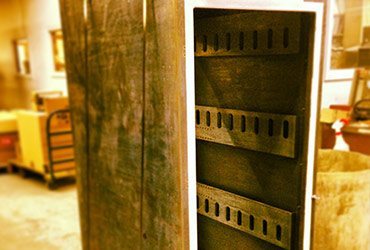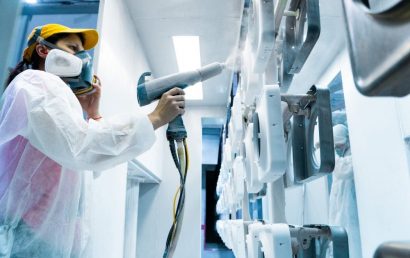Enhancing Inner Diameter Wear Resistance With Thermal Spray Coatings
Gas and oil production and exploration moves to more remote locations on a regular basis these days, delving deeper and deeper. But high temperatures, erosion, corrosion, and abrasion can lead to excessive wear – courtesy of the harsh environments involved. Specifically, inner diameter wear is being experienced by components used in this type of situation. Thanks to thermal spray coatings and today’s technology, the reliability and life expectancy of these components can be improved and extended.
Critical Component Protection
To prevent aggressive wear, effective protection is being provided by dense carbide based coatings. To apply coating powder feedstocks of various types, thermal spray is used. In the industry, there are any number of thermal spray solutions, HVOF (high velocity oxygen fuel) being the most common.
Smaller Inner Diameters Needed Specially Developed Coatings
Tubes, sleeves, valve bodies, housings, flow tubes, and cylinders tend to present a problem due to their internal surfaces’ smaller diameters. These are difficult to coat. In milliseconds and over a small spray distance, the heating and acceleration of powder particles must take place. This is necessary to produce and encourage adhesion to the substrate of the dense carbide coating.
There are several thermal spray ID (inner diameter) solutions. One such method creates, upon internal diameters’ surfaces, a dense coating in tight spaces. How small of an internal diameter are we talking about here? They can be as small as 71 mm or 2.8 inches.
To overcome the difficulties presented in confined spaces when thermal spraying internal surfaces, significant effort has to be put forth. Compared to standard HVOF systems, the application process needs to take place in a space that is much smaller. There is approximately 25 mm or 1.0 inches of distance between the surface and the torch.
Shorter Spray Distance Adaptation
A finer powder must be used in order to adapt to spray distances that are shorter. In this manner, proper processing of the powder will be executed resulting in a coating that adheres strongly to the substrate. Heat can be a major concern when working in a confined space to apply coatings. To ensure proper control of the substrate temperature, the use of special equipment is necessary.
Coating Characteristics and Properties
When evaluating thermal spray coating quality and inner diameter coating quality, it is essential that corrosion, wear, and coating-to-substrate adhesion strength be tested. This will assist in estimating the life and performance of the part that is being coated. For ID tungsten carbide based coatings, the following are some essential properties and characteristics:
- Carbide based coatings
- Chrome plating
- Various other coating solutions such as alloy materials/coatings
At A&A Coatings, we use the most modern technology, products, methods, adaptations, and more to apply thermal spray coatings of varying types. Our expert technicians are skilled, experienced, and highly educated. Talk to one of our helpful representatives today to find out how your industry currently utilizes thermal spray coatings.
Your company’s bottom line can improve drastically through the use of the right thermal spray coating. Don’t hesitate! Every moment you delay, more parts and components are corroding, eroding, rusting, etc. Contact us today.



